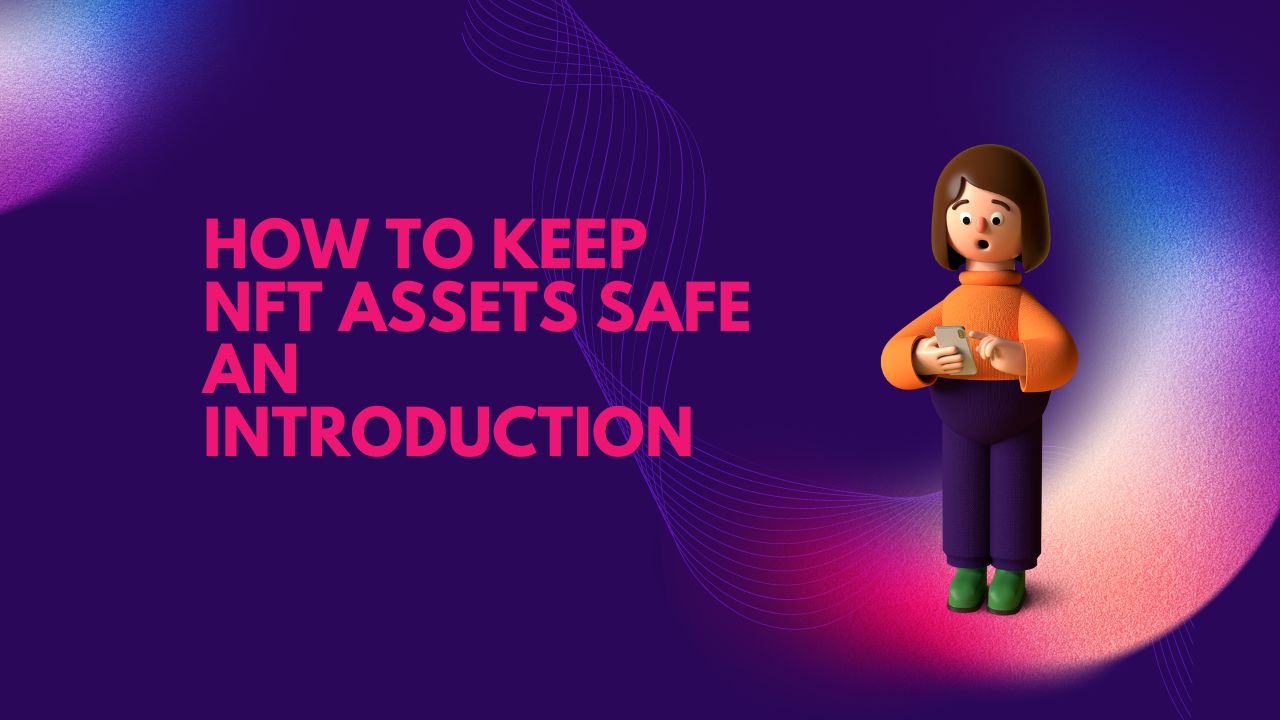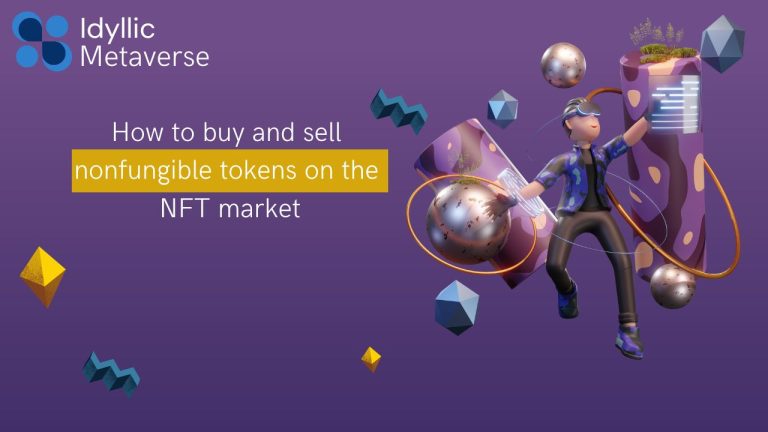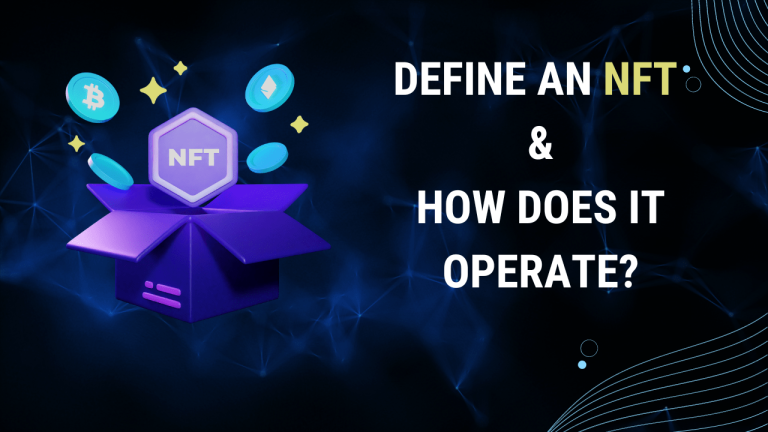How to keep NFT assets safe | An introduction
If you owned a Monet or a Van Gogh that was physically worth millions of dollars, you would undoubtedly spend a significant amount of money and time finding the ideal location to preserve it safely.
The same is true of NFTs, or nonfungible tokens. Some of them are worth thousands or millions of dollars, however, they are not yet regarded as being on the same level as the masterpieces of the greatest artists in history. To prevent losing access to personal investments, it may be essential to learn how to store nonfungible assets.
Non-fungible tokens are other than works of art. They can symbolize anything, such as a creative image, a music video or audio, digital proof of a person’s identification, academic degrees, ownership of a car or property, etc.
Digital assets might be copied and disseminated before blockchain. The majority of products were practically worthless without understanding what or where the underlying digital asset was.
Blockchain enables the creation and validation of original works so that creators can manage their assets in a trustless environment without the need for middlemen. Blockchain also offers an immutable digital ledger.
This innovation represents a substantial advance in the ownership of digital assets and opens the door to a growing industry over the following ten years, not just for digital arts but also for digital real estate, identities, and games, to name a few. To prevent theft and other scams in the digital world, it is crucial to keep NFTs appropriately as digital ownership grows to include valuable goods.
NFTs’ expanding market
The NFT market increased to $2.5 billion in the spring of 2021 from $13.7 million in the same period the year before, according to a Reuters article. After NFTs burst in popularity, sales volumes have recently stayed high, reaching about $5 billion.
A new record for digital art was reached in March when Christie’s sold an NFT by digital artist Beeple for $69 million (£50 million). The other particularly pricey NFT sale was a “CryptoPunk” at Sotheby’s, which netted $11.8 million. In October, sales on the well-known NFT marketplace OpenSea hit a new high of $1 billion.
Grimes, a musician, recently sold part of her digital artwork for more than $6 million, while Jack Dorsey, the creator of Twitter, recently auctioned the first tweet as an NFT, with bids reaching $2.5 million.
The market potential for this kind of asset is enormous, especially in light of the fame and financial influence that the Metaverse will have on NFTs.
Why is it crucial to store NFTs correctly
Nonfungible tokens have soared in value over the past few months, drawing investors as well as hackers hoping to steal digital artwork or credit card information to purchase more.
A few months back, hackers broke into accounts on the NFT marketplace Nifty Gateway and stole items worth thousands of dollars. The site attributed the breach to consumers’ failure to employ two-factor authentication, which made it simple for hackers to identify users’ login information and take their assets.
The security of the company was not jeopardized. However, some really serious questions about the security of leaving NFTs or any other digital items saved on these third-party systems have been raised.
The adage “Not your keys, not your crypto” can and ought to be used for NFTs. The idiom suggests that if you do not own your private keys, as is the case while storing cryptocurrency in exchanges, you do not own the cryptocurrency. Crypto fans will be familiar with this.
With the development of NFTs, various sorts of cryptocurrency wallets have been made specifically for storing NFT data, whereas cryptocurrency wallets have only up until now worked for digital assets.
What kinds of storage are offered
Security is just as important for NFT storage as it is for cryptocurrency storage. You run the risk of being the target of cyberattacks, exchange fraud, or single points of failure if you leave them on an exchange (or marketplace platforms in the case of NFTs).
Decentralized blockchain-based storage is far more secure than centralized storage of digital assets and gives owners complete control over their assets. Additionally, it offers a variety of options for increased mental clarity.
It’s important to keep in mind that you shouldn’t keep cryptocurrencies or NFTs in your wallet. Instead, a wallet uses a private key to ensure access to the investments stored on the blockchain.
With the private key, you effectively control the contents of a cryptographic address. Your digital asset is still susceptible to cyber assaults while it is online.
To prevent unauthorized access, cyberattacks, and other vulnerabilities common to data connected to the internet, it is crucial to preserve and store NFTs in offline solutions for cold storage. This assumes storage in a platform that is not connected to the internet.
The best way to store NFTs offline is to buy a cold storage hardware wallet and transfer the digital assets there. Keyloggers and hackers won’t be able to access the wallet because it will always be offline. Additionally, each hardware wallet includes a password and ID for additional security.
Users can take a few precautions to protect their privacy and keep thieves and hackers at bay before delving into the various alternatives.
It’s crucial to make sure that the NFT storage solutions you select are compatible with various chains and the marketplace where you purchase and sell NFTs. Additionally, you want to confirm that the wallet has a user-friendly interface and strong security.
It is important to confirm that the wallet is compatible with the Ethereum blockchain because the majority of NFTs are Ethereum-based.
The most typical methods for storing NFTs
Computer Wallets
Even for novices and non-techies, setting up an online software wallet is rather simple. The most popular method for storing digital assets is software wallets because of their user-friendly design.
In the NFT market, there are many possibilities for software wallets, and most of them feature both mobile and web capabilities.
A software wallet like Metamask, which is simple to set up, is regarded as standard security for your NFTs. Transactions using Metamask are encrypted and secured by a password and a 12–24 word seed phrase. It was designed as a Chrome extension exclusively. Ethereum and DeFi are supported.
Online services like Metamask make them susceptible to hacker attacks. They have been hacked in the past and could still become vulnerable. Always keep an eye out for the authentic, authorized application because numerous bogus Metamask apps have previously duped consumers.
Enjin wallet is another piece of software that may be used to store cryptocurrency as well as produce, distribute, and integrate NFTs, with a market volume of $10.3 million. As an official NFT wallet app, it will soon be integrated with Samsung S10 handsets and supports Defi and Ethereum as well.
The Math wallet stands out for offering amazing native compatibility for more than 70 public blockchains. The Trust wallet also functions as a DeFi, crypto, and NFT wallet and supports a variety of blockchains.
NFT holders will be able to mint, buy, sell, display, and manage their assets on the peer-to-peer marketplace that Coinbase just stated would be created.
System of Interplanetary Files (IPFS)
Users can store their decentralized NFTs off-chain via the peer-to-peer hypermedia protocol known as IPFS, which lowers the vulnerability to hacking.
By adopting content-based addressing in place of conventional location-based addressing, IPFS modifies how information is disseminated globally. Your file is divided into smaller bits, cryptographically encrypted, and given a special fingerprint known as a content identifier when you add it to IPFS (CID).
Instead of an HTTP link that can be altered and compromised, content IDs are hashes that are directly associated with a user’s NFT material, providing significant protection. This CID serves as a permanent record of your file, and if you upload a new version to IPFS, a new CID is assigned to it because the cryptographic hash has changed.
As a result, files stored on IPFS cannot be altered or censored, and the original version of a file cannot be overwritten by any modifications. You will be made aware of the bogus information on your end if a hacker node ever generates a CID hash.
Your NFTs can be stored more securely thanks to the advantages of an IPFS. Additionally, the decentralized and distributed design of this sort of storage is in line with blockchain concepts; in particular, middlemen are not required.
An IPFS-based NFT wallet is called Pinata. It was established in 2018 and has more than 70,000 members and over 45 million files worldwide. Despite not being the most often used storage option, because of its improved security, it has the potential to expand, particularly among developers.
Hardware Cold Storage Wallet
NFT holders should think about acquiring a hardware wallet that supports cold (offline) storage if they want to significantly boost the security of their funds. This implies that instead of being stored on the web, where they are vulnerable, the private keys that allow users to access their digital assets are kept in an unhackable hardware wallet device.
Since two-factor authentication is always enabled, the hardware wallet offers additional protection. It is not feasible to hack or take the content from the wallet device without actually holding it. Trezor and Ledger are the two most widely used hardware wallets. The artwork and any other cryptocurrency are not physically present in the wallets. They do, however, keep the private keys that allow users access to their on-chain holdings.
Owning collectibles or any other kind of digital item shouldn’t ultimately cause problems or concerns about security. There are options today for everyone and every need, from pricy solutions to inexpensive internet platforms that ensure a largely secure environment. For investors who possess a sizable number of NFTs, options like hardware wallets might be more expensive, but the improved security they offer might be worth taking into account.
FAQS:
Where are NFT pictures kept?
The NFT image and its associated metadata are frequently kept in a hash. A centralized or decentralized hosting service can be identified using this hash. Centralized hosting companies like Amazon and Google are examples. The 1s and 0s that make up the NFT are stored on servers that are managed by centralized hosting companies.
Where should my NFT be kept?
If you want to keep onto your NFTs for a long time, a cold wallet is OK as you won’t be using it that often anyhow. However, if you frequently trade NFTs, it’s more convenient for you to store your NFTs in a hot wallet.







